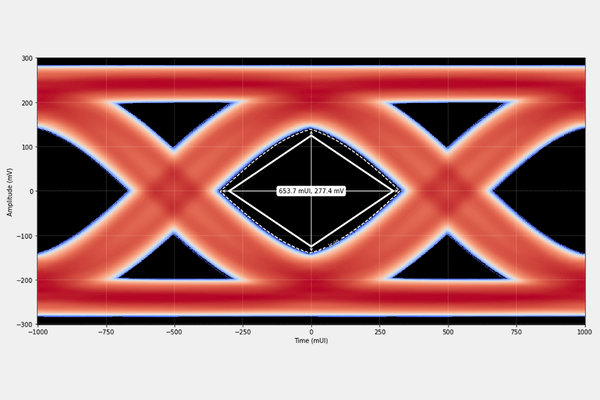Capacity Limitations and Increased AI Demand Fuel a 19% Rise in US Data Centre Prices

In an era defined by digital transformation, the demand for data centres has reached unprecedented heights. This surge, propelled by the growing reliance on artificial intelligence (AI) and the expansion of cloud services, has not only intensified the competition for resources but has also sparked a notable rise in construction and operational costs. As we delve into the dynamics of this evolving landscape, it’s essential to consider the role of advanced technologies, such as retimer devices, in mitigating the challenges faced by data centres today.
The Rising Tide of Data Centre Demand
Recent reports from industry analysts such as JLL and CBRE have highlighted a significant uptick in data centre construction and demand across North America. This burgeoning demand is driven by a myriad of factors, including the exponential growth of AI applications and the unyielding expansion of digital services. As Andy Cvengros from JLL points out, the pursuit of power and capacity has led to a rapid expansion of data centre growth, stretching beyond core markets into new territories.
This expansion is not without its challenges. The scarcity of available land and the quest for sustainable power sources have propelled developers to explore secondary markets, which now account for almost 20 percent of the capacity under construction. Moreover, the pre-leasing of a majority of this new capacity underscores the urgent need for solutions that can enhance the efficiency and scalability of data centres.
Insightful Facts and Figures: A Glimpse into Data Centre Dynamics
The data centre sector is experiencing a significant transformation, underscored by compelling facts and figures that highlight the scale of growth and the challenges it brings. In 2023, data centre construction reached a new peak, with 3,077.8 MW of capacity under construction in primary markets. Remarkably, 83 per cent of this capacity was pre-leased even before completion, illustrating the intense demand for data infrastructure. Furthermore, vacancy levels hit a record low of 3.7 per cent, signalling tight market conditions and the urgent need for expansion.
A closer look at specific markets reveals the dynamic shifts occurring across the landscape. For instance, Northern Virginia, a pivotal data centre hub, saw its availability dwindle to a mere 0.2 percent in January 2024, showcasing the critical shortage of capacity. Meanwhile, emerging markets like Salt Lake City, Utah, and Atlanta, Georgia, are witnessing rapid growth, with Salt Lake City set to more than double its existing capacity. These developments reflect the industry’s push towards new territories in search of power and land, further emphasizing the importance of technologies like retimers in sustaining connectivity and performance across expanding networks.
The escalating costs underscore the challenges facing the sector. According to CBRE, the average asking rental rate for primary wholesale colocation markets surged by 18.6 percent in 2023, marking a significant price increase that mirrors the growing demand and the rising costs of construction and operation. This financial aspect, coupled with the physical expansion of data centres, highlights the complex interplay of factors driving the evolution of the data centre industry.
Retimer Technology: A Key to Efficiency and Scalability
In the context of these developments, the significance of retimer technology cannot be overstated. Retimers are crucial for ensuring the integrity of high-speed data transmission over long distances within the infrastructure of data centres. By regenerating signals, retimers mitigate data loss and reduce latency, which is paramount in environments where the speed and reliability of data transfer are critical.
Given the current landscape, where the demand for data centres is escalating alongside their operational complexities, the adoption of advanced retimer solutions appears not just beneficial but essential. These technologies play a pivotal role in addressing the bandwidth and connectivity challenges that come with the territory of expanding data centre capacities.
The Role of Retimers in Data Centre Expansion
As data centres evolve to accommodate growing demands, the architecture and technology underpinning these facilities must also advance. The development of multi-story data centres and the push for denser megawatts per square foot are indicative of the industry’s efforts to maximise space and power efficiency. In this scenario, retimer technology emerges as a key enabler, facilitating faster and more reliable data communication across increasingly complex data centre layouts.
Moreover, as the geographical footprint of data centres widens, the importance of retimers in supporting long-distance data transmission becomes even more pronounced. This is particularly relevant in the context of secondary and tertiary markets, where the ability to maintain high-speed data connections over greater distances can significantly impact the operational efficacy of data centres.
Navigating the Future
The landscape of data centre development is marked by rapid growth and technological innovation. As the industry grapples with the challenges of scaling capacity, reducing latency, and ensuring data integrity, the role of technologies like retimer devices becomes increasingly crucial. These advancements are not just about keeping pace with current demands but about anticipating the future needs of a digitally driven world.
In light of these considerations, the dialogue around data centre expansion must include a focus on technological solutions that can support sustainable growth. As the industry moves forward, the integration of retimer technology and other innovations will be key to unlocking new levels of efficiency, reliability, and scalability in data centre infrastructure.
Conclusion
The demand for data centres is a testament to the digital age’s relentless progression. As this demand continues to surge, the challenges of capacity, efficiency, and sustainability remain at the forefront. However, through the adoption of advanced technologies such as retimer devices, the industry can navigate these challenges with greater agility. By embracing innovation, data centres can continue to serve as the backbone of our digital world, powering the future with unwavering reliability and efficiency.
Frequently Asked Questions
Q: What are retimers, and why are they important?
A: Retimers are devices that regenerate signals in data transmissions, ensuring that data can travel longer distances without loss of quality. They are crucial for maintaining high-speed, reliable connections in data centres and other applications where data integrity is paramount.
Q: How do Kandou’s retimers support data centre efficiency?
A: Kandou’s retimers enhance data transmission speeds and reliability, reducing latency and improving overall efficiency in data centres. This supports the growing demand for faster, more reliable data services, especially in sectors like AI and cloud computing.
Q: Can Kandou’s technology address the challenges of expanding data centre capacity?
A: Yes, Kandou’s retimer solutions are designed to support the scalability and performance needs of expanding data centres. By improving data transmission capabilities, Kandou’s technology helps facilitate the growth and efficiency of data centre infrastructure.
Q: Are Kandou’s retimer solutions suitable for all types of data centres?
A: Kandou offers a range of retimer products that can be tailored to meet the specific needs of various data centre environments, whether they are focused on cloud services, AI, or other digital applications.



